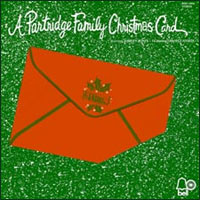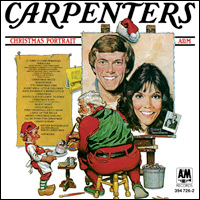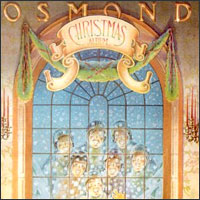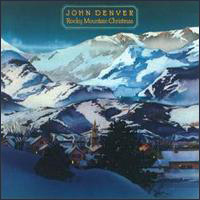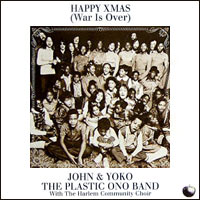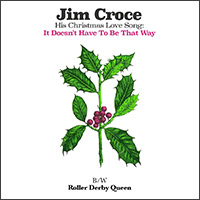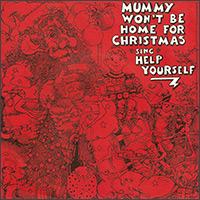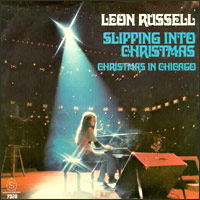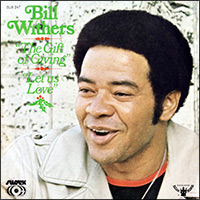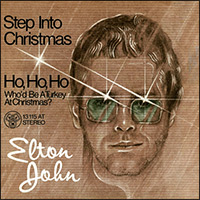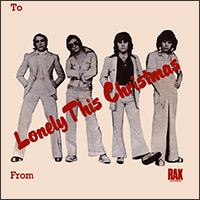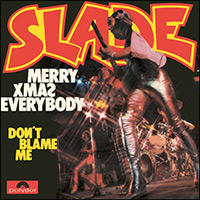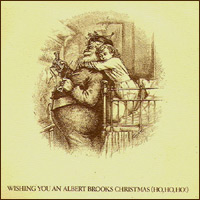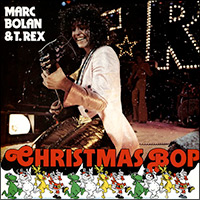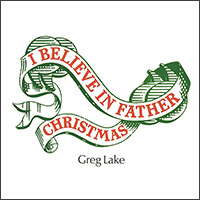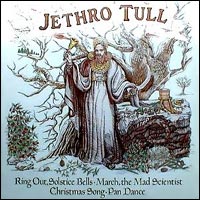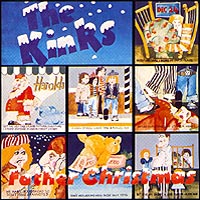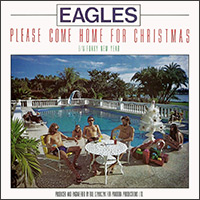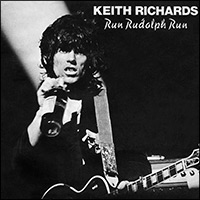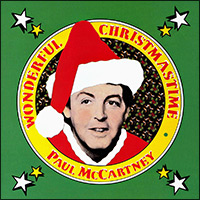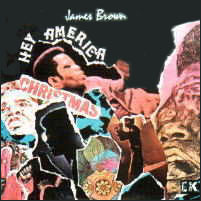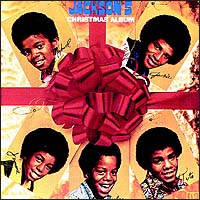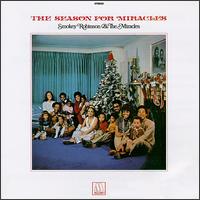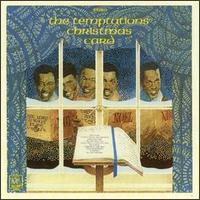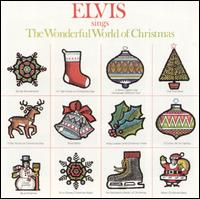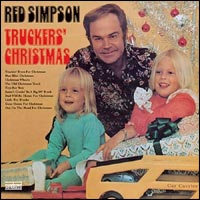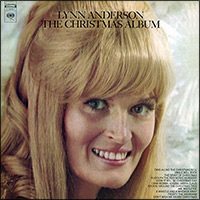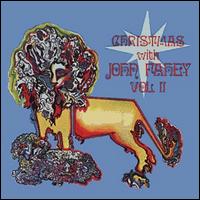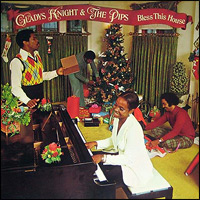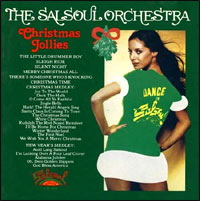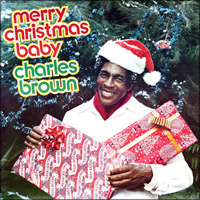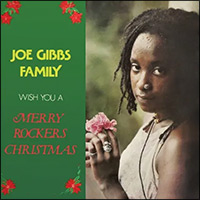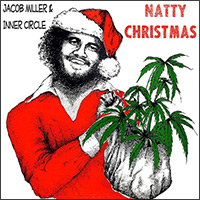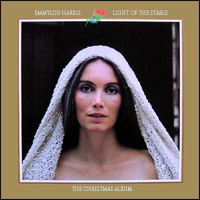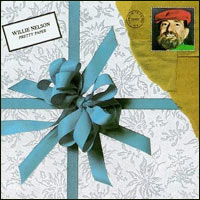
Sucking In The 70's
Christmas Music During "The Me Decade"
Support www.hipchristmas.com! Shop at Amazon, Apple Music, and more...
 First, some history. The golden age of Christmas music took off during World War II with the introduction of nostalgic, yet thoroughly modern holiday odes like "White Christmas" (1942), "I'll Be Home For Christmas" (1943), and "Have Yourself A Merry Little Christmas." With peace and prosperity came ebullient classics like "Let It Snow" (1945), "The Christmas Song" (1946), and "Merry Christmas Baby" (1947). Later, rock 'n roll gave us songs like "Jingle Bell Rock" (1957), "Rockin' Around The Christmas Tree" (1958), and "Christmas (Baby Please Come Home)" (1963). Across those two decades, virtually every song we now think of as a holiday standard was written and recorded.
First, some history. The golden age of Christmas music took off during World War II with the introduction of nostalgic, yet thoroughly modern holiday odes like "White Christmas" (1942), "I'll Be Home For Christmas" (1943), and "Have Yourself A Merry Little Christmas." With peace and prosperity came ebullient classics like "Let It Snow" (1945), "The Christmas Song" (1946), and "Merry Christmas Baby" (1947). Later, rock 'n roll gave us songs like "Jingle Bell Rock" (1957), "Rockin' Around The Christmas Tree" (1958), and "Christmas (Baby Please Come Home)" (1963). Across those two decades, virtually every song we now think of as a holiday standard was written and recorded.
That all came to a crashing halt in the early 1960's with the arrival of Bob Dylan, the Beatles, and the ensuing counterculture. Christmas music simply wasn't hip anymore. Less of it was made, and less of it was sold. By the 1970's, it was almost in hibernation - relatively speaking. The sale of Christmas records dipped so far that Billboard stopped tracking them on a separate chart after 1972. By the late 70's, punk rock was starting to revive the idea that Christmas music could be a suitable subject for hipster acts to tackle - though often as an object of ridicule. Billboard jump-started their Christmas chart in 1983, and by the late 80's and the advent of A Very Special Christmas, holiday music was back. By the 21st century and the advent of the internet, the new golden age was upon us - and I haven't slept a wink since.
That all means there's just a lot less Christmas music from the 1970's - especially the hip kind. In my personal, dysfunctionally vast collection of Christmas music, I own roughly twice as much music from the 1950's as from the 1970's, and three times as much from the 1960's. Barely a tenth of my Top 100 Songs were recorded during the 70's, and much the same can be said of the Billboard charts, where the "golden age" music of the 40's, 50's, and early 60's dominated through the end of the 20th century.
My problem is, I came of age in the 1970's, and I love that music. Those were the glory days of classic rock, glam, heavy metal, funk, disco, and outlaw country. But, it was also the decade of soft rock, smooth jazz, "Billy Don't Be A Hero," "Afternoon Delight," the Bay City Rollers, smiley faces, lava lamps, mirror balls, platform shoes, and leisure suits. Not surprisingly, then, some of the most prominent Christmas albums of the decade were by Bobby Sherman, the Partridge Family, the Carpenters, the Osmonds, and John Denver - hardly paragons of hip, even if some of those albums had fine moments. Even the Brady Bunch got in on the act.
(Not) Sucking In The 70's
All the same, plenty of wonderful, often kooky Christmas records were released during the 1970's. But, they didn't tend to become hits, so you had to look harder to find them. To prove my point, I've compiled two ad hoc lists of the best and/or most notable songs and albums of "The Me Decade" (in chronological order), pulled mostly from the realms of rock, rhythm 'n' blues, and country music. Most, you will see, were recorded by established artists - who had less to risk - or by relative unknowns - who had nothing to lose. Most were released early in the decade before the epicurean, narcissistic zeitgeist of the 70's really kicked in, and a disproportionate number hail from England - where Christmas music never fell completely out of fashion.
100 Great 70's Christmas Songs
- Gee Whiz, It's Christmas (Beginning Of The End, 1970)
- Go Power At Christmas Time (James Brown, 1970)
- Merry Christmas Darling (Carpenters, 1970)
- Six Tons Of Toys (Dave Dudley, 1970)
- Black Christmas (Emotions, 1970)
- Feliz Navidad (José Feliciano, 1970)
- This Christmas (Donny Hathaway, 1970) Top 100 Song
- Santa Claus Is Coming To Town (Jackson 5, 1970) Top 100 Song
- I Can't Have A Merry Christmas, Mary (Without You) (Jerry Lee Lewis, 1970)
- Christmas In My Soul (Laura Nyro, 1970)
- A Christmas Song (Shawn Phillips, 1970)
- I Believe In Christmas Eve (Smokey Robinson & The Miracles, 1970)
- Yesterday's Christmas (Bobby Sherman, 1970)
- Who Took The Merry Out Of Christmas (Staple Singers, 1970) Top 100 Song
- God Rest Ye Merry, Gentlemen (Sweetwater, 1970)
- Let's Put Christ Back In Christmas (Tammy Wynette, 1970)
- Don't Wish Me Merry Christmas (Lynn Anderson, 1971)
- Soul Santa (Brook Benton, 1971)
- Santa Claus And His Old Lady (Cheech & Chong, 1971)
- Happy Xmas (War Is Over) (John Lennon & Yoko Ono, 1971) Top 100 Song
- River (Joni Mitchell, 1971)
- My Christmas Card To You (Partridge Family, 1971)
- If I Get Home On Christmas Day (Elvis Presley, 1971) Top 100 Song
- It Doesn't Have To Be That Way (Jim Croce, 1972)
- Christmas Eve Can Kill You (Everly Brothers, 1972)
- I Want To Come Home For Christmas (Marvin Gaye, 1972)
- Mummy Won't Be Home For Christmas (Help Yourself, 1972)
- Mary Had A Baby (Mary Hopkin, 1972)
- Remember (Christmas) (Harry Nilsson, 1972)
- Slipping Into Christmas (Leon Russell, 1972)
- The Gift Of Giving (Bill Withers, 1972)
- Christmas For The Free (Argent, 1973)
- Season's Greetings (Cix Bits, 1973)
- Daddy's Drinking Up Our Christmas (Commander Cody, 1973)
- Please, Daddy (Don't Get Drunk This Christmas) (John Denver, 1973)
- Coming Home Christmas (Edward Bear, 1973)
- If We Make It Through December (Merle Haggard, 1973) Top 100 Song
- Step Into Christmas (Elton John, 1973) Top 100 Song
- Mr. And Mrs. Santa Claus (George Jones & Tammy Wynette, 1973)
- It May Be Winter Outside (But In My Heart It's Spring) (Love Unlimited, 1973)
- Lonely This Christmas (Mud, 1973)
- Santa Doesn't Cop Out On Dope (Martin Mull, 1973)
- Christmas In Prison (John Prine, 1973)
- Truckin' Trees For Christmas (Red Simpson, 1973)
- Merry Xmas Everybody (Slade, 1973)
- I'll Be Your Santa Baby (Rufus Thomas, 1973) Top 100 Song
- I Wish It Could Be Christmas Everyday (Roy Wood & Wizzard, 1973)
- Child Of Winter (Christmas Song) (Beach Boys, 1974)
- Daddy's Christmas (Albert Brooks, 1974)
- Funky Funky Christmas (Electric Jungle, 1974)
- Ding Dong, Ding Dong (George Harrison, 1974)
- Xmas Done Got Funky (Jimmy Jules & The Nuclear Soul System, 1974)
- Santa Claus Wants Some Lovin' (Albert King, 1974) Top 100 Song
- Circle Of Steel (Gordon Lightfoot, 1974)
- Christmas Song (Gilbert O'Sullivan, 1974)
- Hey Mr. Christmas (Showaddywaddy, 1974)
- Thank God It's Not Christmas (Sparks, 1974)
- Wombling Merry Christmas (Wombles, 1974)
- Jesus Christ (Big Star, 1975)
- Silent Night (Elvin Bishop, 1975)
- Christmas Bop (Marc Bolan & T. Rex, 1975)
- The Christmas Song (Chestnuts Roasting On An Open Fire) (Jimmy Castor Bunch, 1975)
- A Spaceman Came Traveling (Chris DeBurgh, 1975)
- What Will The New Year Bring (Donna Fargo, 1975)
- Santa Jaws (Homemade Theatre, 1975)
- I Believe In Father Christmas (Greg Lake, 1975)
- Happy Holidays (Ohio Players, 1975)
- Santa Claus Is Coming To Town (Bruce Springsteen, 1975)
- A Trucker's Christmas (Lee Arnold, 1976)
- Silent Night (Can, 1976)
- I Saw Mommy Kissing Santa Claus (Impressions, 1976)
- Ring Out, Solstice Bells (Jethro Tull, 1976)
- Christmas Song (Natural Gas, 1976)
- Jingle Bell Hustle (Wayne Newton, 1976)
- Christmas Time (Salsoul Orchestra, 1976)
- Christmas Must Be Tonight (The Band, 1977)
- Peace On Earth/Little Drummer Boy (David Bowie & Bing Crosby, 1977)
- 25th Of Last December (Roberta Flack, 1977)
- Father Christmas (Kinks, 1977) Top 100 Song
- It's Just Another New Year's Eve (Barry Manilow, 1977)
- (It's Gonna Be A) Punk Rock Christmas (Ravers, 1977)
- Star Of Bethlehem (Neil Young, 1977)
- Christmas Song (Angel, 1978)
- ¿Dónde Está Santa Claus? (Charo & The Salsoul Orchestra, 1978)
- Silent Night (Dickies, 1978) Top 100 Song
- Please Come Home For Christmas (Eagles, 1978)
- Run Rudolph Run (Foghat, 1978)
- Blue Christmas (Robert Gordon with Link Wray, 1978)
- Disco Santa Claus (Raindolls, 1978)
- Run Rudolph Run (Keith Richards, 1978)
- Xmas At K-Mart (Root Boy Slim & The Sex Change Band, 1978)
- Christmas Card From A Hooker In Minneapolis (Tom Waits, 1978)
- Christmas Rappin' (Kurtis Blow, 1979)
- No Xmas For John Quays (The Fall, 1979)
- A Merry Jingle (Greedies, 1979)
- Light Of The Stable (Emmylou Harris, 1979) Top 100 Song
- Wonderful Christmastime (Paul McCartney, 1979)
- Happy Holidays To You (Whispers, 1979)
- Christmas Time's A-Coming (Mac Wiseman, 1979) Top 100 Song
- Another Christmas (Yobs, 1979)
20 Great 70's Christmas Albums
- James Brown, Hey America (King, 1970)
The Godfather of Soul made his biggest contributions to soul and funk in the 50's and 60's, including two fine holiday albums, Christmas Songs (1966) and A Soulful Christmas (1968). But, Hey America was released in 1970, so it counts as a 70's classic! Highlights include "Go Power At Christmas," "Santa Claus Is Definitely Here To Stay," and the amazing title track, a confusing plea for peace packed with lyrical non sequiturs. You'll also find the best tracks on Funky Christmas, one of my Top 20 Albums, and the whole album is contained in The Complete James Brown Christmas. - Jackson 5, Christmas Album (Motown, 1970)
Michael Jackson and his brothers were one of the last hurrahs of Motown Records' "Golden Decade," which is firmly rooted in the 1960's. But, again, their Christmas Album - one of my Top 20 Albums - was released at the start of the 70's. It includes numerous great performances, including their definitive take on "Santa Claus Is Coming To Town." In 1973, the label would summarize the holiday legacy of the Golden Decade with A Motown Christmas, but that's another story. It included one new song, Michael Jackson's "Little Christmas Tree," which would prove to be the last holiday recording of the label's storied run as the Sound of Young America. - Smokey Robinson & The Miracles, A Season For Miracles (Motown, 1970)
Another Motown album that technically squeaks by, A Season For Miracles was the group's second Christmas album and includes some fine moments such as Smokey's original song, "I Believe In Christmas Eve." It's fine, but I recommend Our Very Best Christmas - one of my Top 20 Albums - a collection featuring the best of Season For Miracles and the group's first holiday album, Christmas With The Miracles (1963). Smokey would leave the group in 1972 and launch a long, successful solo career. - Temptations, Christmas Card (Motown, 1970)
Yet another Motown album, the Temptations' Christmas Card - one of my Top 20 Albums - was their first-ever full-length holiday record. It showcased their smoother side, as it featured Paul Williams rather than David Ruffin, the formidable baritone who left in 1968. The group's seductive take on "Rudolph The Red-Nosed Reindeer" is transformational, though it doesn't really count as a 70's song since it had been first released as a single back in 1968. Still, it registered in 1970 and 1971 on Billboard's Christmas chart - peaking at #3 in 1971, so it gets by on a technicality. - Buck Owens & Susan Raye, Merry Christmas (Capitol, 1971)
Buck Owens was riding high in 1971 as the host of the popular-but-cornpone TV show, Hee Haw. And, he had previously released two fine, largely original holiday albums, Christmas With Buck Owens & The Buckaroos (1965) and Christmas Shopping (1968). Merry Christmas was a new effort with his comely Buckaroo, Susan Raye, who would go on to success as a solo artist with songs like "L.A. International Airport" and "(I've Got A) Happy Heart." Every one of the titles on Merry Christmas appeared on Owens' two previous Christmas records, but they are all-new recordings sung as duets with Raye.
- Partridge Family, Christmas Card (Bell, 1971)
Even more than their 60's predecessors, the Monkees, the Partridge Family were not a real band. They were characters on a TV show, and only lead singer David Cassidy (aka Keith Partridge) made significant contributions to their records. But, they cranked out a great string of hit singles, including "I Think I Love You," "I'll Meet You Halfway," and "I Woke Up In Love This Morning." Christmas Card capped their hot streak, and I guarantee it will exceed your expectations. - Elvis Presley, Wonderful World Of Christmas (RCA, 1971)
The King's second Christmas and final album is part of the great renaissance that followed in the wake of his 1968 comeback, and it includes a variety of original songs and traditional covers. There's a lot to love on Wonderful World, including the 1966 single, "If Every Day Was Like Christmas," and "If I Get Home On Christmas Day," one of my Top 100 Songs. But, his six-minute jam on Charles Brown's "Merry Christmas Baby" is revelatory. The whole album is included on If Every Day Was Like Christmas, one of my Top 20 Albums. - Johnny Cash, Christmas With The Johnny Cash Family (Columbia, 1972)
I'm on record as not being a big fan of Johnny Cash's voluminous Christmas catalog - even though I revere the Man In Black. His second full-length holiday album, Christmas With The Johnny Cash Family is, indeed, a family affair, with contributions from his wife June Carter Cash, the Carter Family, old friend Carl Perkins, and the Statler Brothers, who had long supported Cash in the studio and on the road. It's a homespun, heartfelt, modest album, and it's arguably the most enjoyable of the four Christmas albums Cash cranked out during his long career. - Red Simpson, A Trucker's Christmas (Capitol, 1973)
Comparatively, the conservative country market saw less of a downturn in Christmas albums during the 70's than the pop market. Charley Pride, Merle Haggard, Connie Smith, Freddy Fender, Lynn Anderson, Tammy Wynette, and Red Sovine were among the big names that released Christmas albums - all of them fairly unexceptional, though most featured some excellent tracks. Red Simpson gets extra points for A Trucker's Christmas since it's comprised of all-new songs about being (wait for it) a trucker at Christmas. Truck songs had been a big deal in country music for a long time, but America was about to experience the "C.B. Craze" - where we all got citizen band radios like the truckers used, largely in an effort to avoid speeding tickets. The fad would inspire the #1 single "Convoy" by C.W. McCall (1975) and a long list of imitators, including "A Trucker's Christmas" by Lee Arnold (1976). A Trucker's Christmas wasn't really related to all that, but it's of fun bit of synchronicity. - John Denver, Rocky Mountain Christmas (RCA, 1975)
By the mid-70's, folkie John Denver had became an unlikely superstar on the strength of such hits as "Take Me Home Country Roads" and "Rocky Mountain High," essentially becoming the poster boy for the post-hippie "back to nature" movement that served as a counterweight to the increasingly hedonistic, materialistic nature of the decade. Rocky Mountain Christmas was released at the very peak of his popularity after a string of #1 albums, Back Home Again (1974), An Evening With John Denver (1975), and Windsong (1975). Predictably, his first holiday album wasn't quite as successful, but it still reached the Top 20 - a rare feat for such things at the time. Later in the decade, Denver waxed the charming, if insubstantial, A Christmas Together (1978) with Jim Henson's Muppets.
- John Fahey, Christmas With John Fahey Vol. 2 (Takoma, 1975)
This was acoustic guitarist extraordinaire John Fahey's follow-up to his 1968 masterwork, The New Possibility (1968). It was folk music that made you prick up your ears and pay attention. After this, he would record three more Christmas albums, none with quite the same pluck as the two originals. - Gladys Knight & The Pips, Bless This House (Buddah, 1975)
Gladys Knight and her merrymen spent much of the 1960's at Motown, where they never waxed a Christmas record - one of two major Motown acts to not do so (the Four Tops being the other). Bless This House was recorded for her new label, Buddah, and it's a quiet, soulful, reverent affair. It only hints at the fire that yielded "Midnight Train To Georgia," "I've Got to Use My Imagination," and other contemporary hits for Buddah. Knight and the Pips later jumped to Columbia, where their next Christmas album, That Special Time Of Year (1982), would be both livelier and slicker. - Various Artists, Funky Christmas (Cotillion, 1976)
Cotillion Records' erstwhile sequel to Atco's 1968 masterpiece Soul Christmas was neither a masterpiece nor terribly funky. It was a generally low-key, though very soulful album, most notable for the appearance of the post-Curtis Mayfield Impressions (who turn in a discofied "I Saw Mommy Kissing Santa Claus") and two tracks by underappreciated soul diva Margie Joseph. Funky Christmas also marks the world's introduction to Luther Vandross, albeit as the leader of his erstwhile group, Luther. - Salsoul Orchestra, Christmas Jollies (Salsoul, 1976)
The most significant holiday disco album ever, Christmas Jollies was also a bit of a letdown from Salsoul Records' usual vapid-but-fun fare. It was just as vapid, but not as much fun. It's probably more famous for its cover art, which repurposed the label's cheeky dance your ass off mascot. The Salsoul Orchestra would record another Christmas Jollies in 1981, and it would all be reissued in spectacular fashion by Real Gone Music in 2023. - Charles Brown, Merry Christmas Baby (Big Town, 1977)
Blues singer and pianist Charles Brown first recorded "Merry Christmas Baby" in 1947, and he waxed the original version of "Please Come Home For Christmas" in 1960, which the Eagles would take to the Top 20 in 1978. This 1977 album obviously includes a new version of its title track, but it is otherwise wholly original - and really pretty strange. Many of the songs are in a minor key and played at a languid tempo, lamenting the loss of love, fortune, or friendship. And, it's filled with odd, squiggly guitar and synthesizer sounds that date it horribly while, conversely, making it sound quite unique. Perhaps unsurprisingly, it's never been reissued in any digital format.
- Carpenters, Christmas Portrait (A&M, 1978)
Rightly or wrongly, the Carpenters were seen as reactionarily anti-rock, bringing back the classic pop aesthetic of Cole Porter, George Gershwin, Henry Mancini, and, especially, Burt Bacharach. I'd argue that's only half the story, but their Christmas music is often closer to the rank easy listening of Mantovani or Mitch Miller. Christmas Portrait only shines when Richard Carpenter puts down the baton and lets the rich, gorgeous voice of his sister, Karen, take the spotlight. The centerpiece of the album is "Merry Christmas, Darling," recorded as a single in 1970 - when it topped the Christmas charts - and featured here in an amended version, remixed and tweaked by Richard with an entirely new lead vocal by Karen. (The original single version can only be found on the Carpenters' 2002 boxed set, The Essential Collection 1965-1997.) - Whispers, Happy Holidays To You (Solar, 1979)
In recording Happy Holidays To You, the Whispers were helping reclaim Christmas music for their audience - the emergent black middle class. And, while not exactly a hit, the album made a lasting impression. In 1981, critic David McGee included it on his foundational list of essential Christmas albums, and it's been reissued over and over in the decades since. - Joe Gibbs Family, Wish You A Merry Rockers Christmas (Joe Gibbs Music, 1979)
Renowned producer Joe Gibbs created one of the first reggae Christmas albums in 1979, featuring his formidable stable of artists, including Dennis Brown, Culture, Mighty Diamonds, and Jacob Miller, as well as famed rhythm section Sly Dunbar and Robbie Shakespeare. Gibbs helmed hundreds of classic reggae singles and albums as esteemed as Culture's Two Sevens Clash (1977). Well, this ain't that. It sounds like a bunch of well-baked people singing Christmas carols over a pleasant, generic reggae beat - which it probably is. The album's been reconfigured and reissued many times since, most famously in 1982 with cover art featuring a giant marijuana plant decorated like a Christmas tree. In 2024, the 1979 and 1982 editions of the album were both included on The Reggae Christmas Collection along with albums by Yellowman and John Holt. And, it's worth noting that Jacob Miller had already released his own album, Ital Christmas, in 1978, later reissued as Natty Christmas. - Emmylou Harris, Light Of The Stable (Warner Brothers, 1979)
I mentioned above that the 70's gave us a fair number of country Christmas albums, at least relative to pop. Emmylou Harris' quietly brilliant Light Of The Stable, however, was the first to emerge from what we would now call alternative country or "Americana" - things that barely existed in the 1970's. Light Of The Stable broke the mold and raised the bar for what country Christmas music could be, and it sits near the top of my Top 20 Albums. With songs like "Christmas Time's A-Coming" and its resplendent title track, Light Of The Stable mixed traditional mountain music and hippie country hoedowns, exuding a warm Christmas glow while evoking a curious combination of melancholy and joy. - Willie Nelson, Pretty Paper (Columbia, 1979)
The redheaded stranger wrote "Pretty Paper" way back in 1963 for rocker Roy Orbison, who took it all the way to #15 on the pop charts. Willie himself recorded the song in 1964, releasing it as a single on RCA. A lot of history had come and gone by the time Willie Nelson recorded a fine new version as the title track of his first Christmas album. Most notably, he decamped Nashville for Austin, Texas, and helped create the "outlaw country" movement with like-minded cosmic cowboys such as Waylon Jennings, Kris Kristofferson, and Jerry Jeff Walker. Pretty Paper doesn't sound like an outlaw record, though. It was produced by Booker T. Jones (of Booker T. & The MG's), who had worked with Nelson on Stardust (1978), a collection of Tin Pan Alley standards. Pretty Paper is cut from the same spare template that Jones designed for the earlier album. Mostly, it's dignified and restrained, and that's not a compliment.





